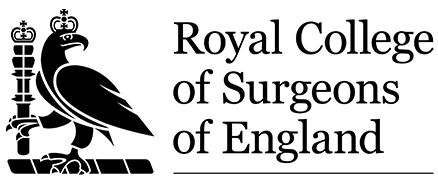Hair transplants are becoming more and more popular around the world. Many celebrities and influencers are opting to update their hairline and the procedure is becoming much more affordable and accessible for everyone. However, what makes you a good candidate for a hair transplant, and what are the limitations when thinking about surgery?
Limitations of Hair Transplants
When thinking about possible hair restoration surgery there are a certain number of factors that need to be taken into consideration:
– Donor area limitations
– Hair transplant surgery does not stop continued hair thinning and hair loss
– Hair taken from outside the donor area
– Hair transplant density / illusion
– Hair transplants are not always a one-time procedure
– Hair transplant alternatives
Donor area limitations
Hair transplants work by extracting hair follicles (grafts) from the donor area. This can be done in the form of FUE or FUT surgery. The most popular method of surgery, especially for men, is FUE (follicular unit extraction).
There is a limitation on the number of grafts that can be extracted in one sitting, and in total. To carry out a hair transplant safely and effectively the maximum number of grafts that can be taken in one sitting is approximately 3000 grafts (6000 hairs). This is to cancel out the chance of overharvesting (taking too many grafts and leaving scars / bald spots at the back of the head). If a patient requires more than 3000 grafts, a second hair transplant is possible, however on average each individual only has approximately 5000 grafts (10,000 hairs) available in total. This is because when the hairs are extracted, they do not grow back, they are simply redistributed to the new area. It is important that you find a surgeon who will take a sensible approach and only push the boundaries are far as is safe to do so.
Hair transplant surgery does not stop continued hair thinning and hair loss
Many patients believe that a hair transplant will solve the problem and give them a full head of hair again for life, but this isn’t always the case. The typical hair transplant addresses either the hairline (front of the head) or the crown area (top of the head). Once a hair transplant has reached its final result the patient is usually happy, however what some people don’t take into consideration is that more often than not they are still losing their existing hair. This can lead to complications as patients will end up with a bald patch in the mid sections behind their hairline or if they have the crown done will end up losing hair around the outside leaving the transplanted hair stranded. To stop this from happening your clinic should recommend some hair loss prevention treatments to use alongside the transplant.
The most popular treatment for ongoing hair loss is without a doubt Finasteride or Dutasteride medication as this blocks DHT (a product of testosterone) and stops it from attacking/killing the hair follicle. Other topical solutions such as topical finasteride, minoxidil and HRP applied with a microneedle also work well to prevent further hair loss. Additionally, the use of Nizoral shampoo helps to stop hair loss by maintaining a healthy scalp.
Hair taken from outside the donor area
The reason that hair transplants are successful is because hairs inside the donor area are not affected as much by hormones as the hairs outside of the donor area. Think about an older man who has lost a lot of hair, he will still have a ‘handle bar’ of hair at the back and around the sides of his head – this hair will never fall out and this is the hair that is used in hair transplants. If the surgeon extracts and transplants hair from outside of this area there is a risk it will be lost down the line, even if it is moved to another part of the head. This is why it is important that you find a team who are not going to harvest from outside the donor area. Overharvesting often happens when too many grafts are taken in one sitting, this is why a plan of two procedures is sometimes the best option for patients who require a large area of coverage. As a rule, the surgeon should not extract more than 3000 grafts in one sitting, unless carrying out a combo (FUT and FUE), or if the patient has an exceptional donor area.
Hair transplant density / illusion
Although hair transplants do give natural results, it is important to note that the density of transplanted hair will never match the density of the native hair you had when you were 21. The good news however is that the new hair is planted in a such a way that there is an illusion of high density when the hair is styled in a neat and tidy way. Hair transplants work by planting hair follicles of 1, 2 and 3+ hairs. You might imagine that the more follicles that are planted in a small area, the higher the density, but this is a myth. If the grafts are planted too close to each other then they will not all survive, meaning that the patient has an underwhelming result. Only 50 grafts at the very most should be planted per square centimeter in order to promote healthy growth. Some clinics will say they are going to plant more for selling purposes but in most cases less is more if you are going to get the best result.
Hair transplants are not always a one time procedure
Every individual has a different type of hair loss and sometimes a single hair transplant is not enough. Therefore, it is important that the surgeon has a suitable plan for each patient and they take into account the possible requirement for future procedures. There are a couple of reasons for this:
If a patient is bald all over the top of his head (hairline, mid-section and crown) the best plan is not to try and do it all in one go. It is possible, but you run the risk of overharvesting (taking too many hair follicles from the back) and there is less chance that all the grafts will survive, leaving disappointing results. The best plan in this scenario is to do a first procedure of approximately 2500 grafts for the hairline working backwards into the mid-section and then address the crown in a 2nd procedure. This way the surgeon knows he will get good density over two procedures and the patient will be happy.
If the patient requires a smaller transplant it is also important that a second procedure is thought about. Hair transplants do not mean that the hair loss stops, and although finasteride medication among other preventative treatments can slow down hair loss, there still might be the need for a 2nd procedure as more hair is lost outside of the transplanted region. This is why when performing the first procedure, the surgeon needs to ensure that they take a conservative approach and enough grafts are left for future procedures.
Everybody has a finite supply of donor hair available, so it is important that it isn’t wasted on one procedure with a hairline that is too low / strong.
Hair transplant alternatives
There are two main factors that make an individual unsuitable for a hair transplant. They have either lost too much hair to get full coverage, or they haven’t lost enough hair / are too young for a transplant.
If a patient has lost too much hair it means that they do not have a strong enough donor area to cover the balding area. One option for this type of patient would be to just do the hairline and quiff the hair over the crown. Another option would be to have SMP (scalp micro pigmentation) – this can be performed either instead of or alongside a transplant to give the illusion of a shaved head with a strong hairline.
If a patient has only lost a small amount of hair (either in the crown or the hairline) and they are in their late teens / early twenties it is often better to go down the medication route rather than opting for a small transplant. It is more than likely that the patient will continue to lose their hair and the likelihood is that they will need a 2nd/3rd transplant in the future. This can be done, however, the surgeon will need as many grafts as possible available throughout the patients journey and doing a transplant too early on in life can be damaging for the patients long term results. Donor hair is precious and it needs to be treated as such.
Interested in HT?
Hair transplants can be life changing for many, but it is important that you work out the right treatment plan for you. To find out more about hair transplants and if you are suitable, please fill in our medical questionnaire to skip the salesman and set up a free consultation directly with one of our surgeons. We will be with you every step of the way to ensure that you get the result you’ve been looking for.



